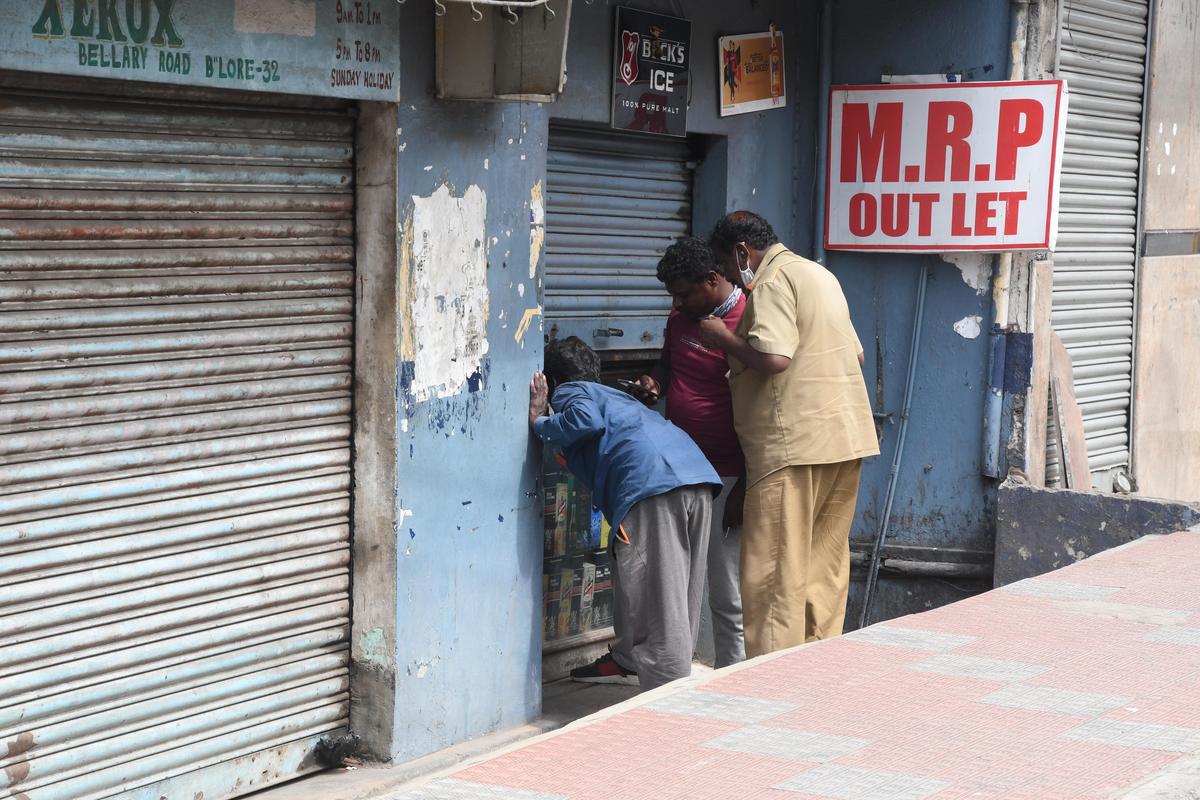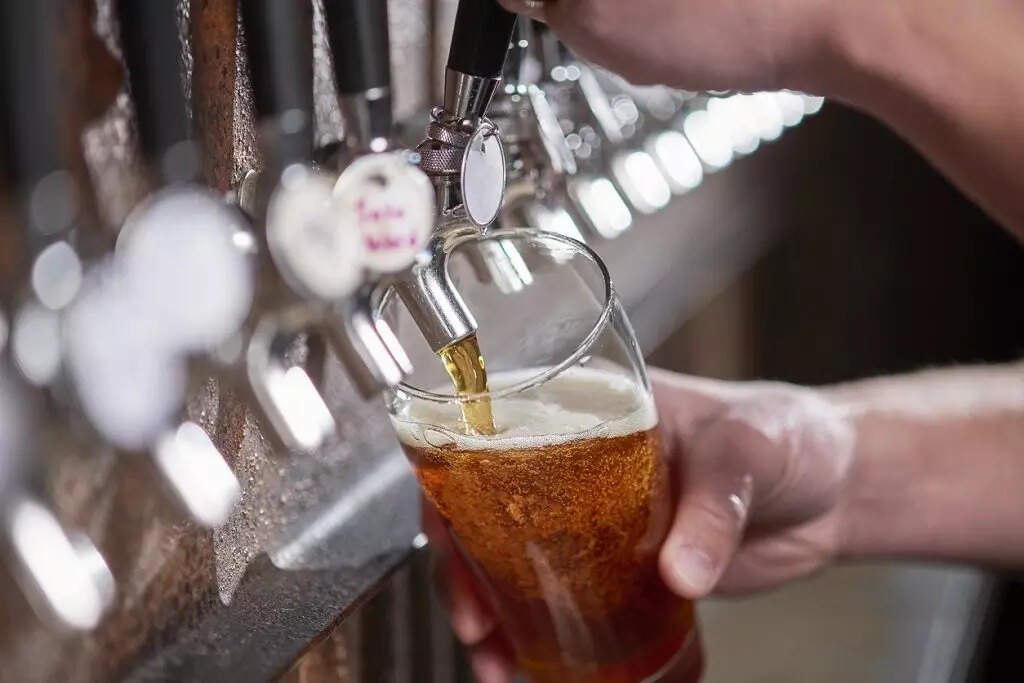If you walk through the bustling lanes of Bengaluru at dusk, there’s a telling silence at the city’s beloved pubs and restaurants: tables are emptier, conversation softer, and the clink of beer mugs less frequent than in years past. Across Karnataka, beer sales have taken a historic tumble. Yet, in a twist that has industry insiders scratching their heads, the state’s excise revenue—the sum government collects from liquor sales—has surged by 11.34%. The result is a paradoxical triumph, one that reveals how fiscal strategy can reshape consumer habits, ripple through rural economies, and leave a bitter aftertaste in the wake of public policy.
The effects of Karnataka’s steep excise policies ripple far beyond the cash registers at liquor outlets and city pubs. The state is home to eleven breweries—more than any other state in India—employing thousands in direct jobs and supporting many more through allied supply chains, logistics, and hospitality. Industry representatives warn that sustained declines in beer sales threaten not just annual profits but the long-term viability of these breweries. Massive investments, estimated at over ₹5,000 crore in the sector, are now perceived as “at risk,” with some players considering relocating expansion efforts to neighboring states with more stable tax regimes.
For manufacturers, the paradox is especially painful. Karnataka’s beer sector accounts for only about 8 percent of the total alcoholic beverage market in terms of volume, yet it contributes around 16 percent of the state’s liquor tax revenue—a share that has steadily grown from 11 percent over the past five years. This disproportionate impact means that any policy change affecting beer is felt acutely in state coffers and equally so in boardrooms, production units, and farms supplying raw materials.
The latest round of excise duty hikes has prompted the Brewers’ Association of India to sound alarms about investor confidence. Repeated tax increases over the past two years—four times since July 2023—have led to what the association calls “growth stagnation.” Where Karnataka’s beer industry saw robust expansion in 2022–23, growth slowed sharply through 2024 and now stands at a near standstill in 2025. Leaders argue that tax uncertainty creates hesitation for both local and global investors, ultimately curtailing innovation, brand launches, and job creation throughout the sector.
These challenging market conditions have a visible social impact. In city centers, the once-thriving beer culture—a source of community, leisure, and even creative enterprise—faces an existential threat. Lower sales have led many small breweries and taprooms to scale down operations, lay off staff, or pivot toward food-centric business models. For regular consumers, especially among young professionals and working classes, the rising cost of their favorite beverage has turned social outings into rare indulgences rather than routine escapes, subtly reshaping patterns of urban sociability.
Finally, there is mounting pressure on policymakers to recognize these impacts and recalibrate excise strategies to sustain both revenue and cultural vitality. Advocacy groups and economists increasingly call for consultation-based policy making, urging the state to hold dialogues with industry, consumer representatives, and civil society before rolling out new rules. The debate has moved beyond immediate fiscal priorities to a broader argument about the future of leisure, employment, and investment in Karnataka—a future whose rhythm, stakeholders warn, cannot survive if policy remains out of sync with economic and social realities.
The numbers behind this paradox speak volumes. In the first half of 2025, Karnataka sold about 195 lakh boxes of beer (each containing 7.8 litres), down from 242 lakh boxes last year—a nearly 20% drop in consumption. Month-wise data highlights the consistency of the slump: January fell by 30.6%, April and May dipped by over 16% and 26%, and every month in the April–September period showed double-digit declines. Even peak summer failed to revive the market, confirming that the downturn isn’t merely seasonal.
For drinkers, these numbers reflect an everyday reality: a bottle that once cost ₹130 now often retails at ₹160 or more—enough to discourage four out of ten regular buyers. Small-town shops have seen regulars halve their purchases, even as Bengaluru’s pub owners admit their traditional summer bump is lost to price shocks and policy uncertainty.
Over the past two years, the Karnataka government has revised excise duties and license fees four times, each cycle pushing retail prices higher. May 2025 marked the latest twist, as policymakers implemented a hike in Additional Excise Duty (AED) from 195% to 200% of the production cost for beer, increasing bottle prices for premium and mid-range brands by ₹10–₹15. Low-end Indian Made Liquor (IML)—including cheaper brands of rum, whisky, and gin—also saw similar hikes, driving consumers to explore cheaper substitutes or, in some cases, cut back entirely.
In response to public criticism, the government streamlined the AED structure to ease the burden on lower-cost beers, aiming for a fairer approach. Yet, the steeper rates meant that even as fewer cartons were sold, each unit generated more tax—and so, while drinkers drank less, the state earned more. Total excise collections climbed from ₹17,702 crore in 2024 to ₹19,571 crore in 2025, a jump that officials hailed as proof of a “successful tax strategy.”


The Consumer’s Crossroads: Price, Policy, and Pain
(The following section describes the human impact, market shifts, and adaptation among beer consumers and retailers.)
Rising retail prices have aggravated long-simmering tension between policymakers, drinkers, and retailers. A Bangalore pub owner explained, “We can’t even raise food prices anymore—people just stop showing up.” In smaller towns, especially in North Karnataka and coastal belts, regular buyers have cut their purchases dramatically, sometimes buying only one bottle instead of four.
Industry insiders lay the blame squarely on repeated tax hikes. The steep fall in sales is not seasonal, but structural—mirrored across months and districts, from sweltering summer in Belagavi to late monsoon in Shivamogga. Unlike previous years, when peaks and troughs matched festival cycles or weather shifts, 2025 has brought uninterrupted decline across the board. Urban drinkers, once a bulwark for beer brands, have turned cautious or shifted to low-alcohol alternatives.
Retailers, meanwhile, keep watch for a “floor effect”—the point at which further price hikes could push buyers to the black market. While excise officials argue that higher duties prevent binge drinking and boost public revenues, shopkeepers warn that long-term strain could undermine the legal beer trade, stifle bar culture, and even increase illicit sales. To cope, the government recently revised AED calculation, attempting to balance public earnings against market sustainability.
But not all are convinced by arguments of public benefit. “People think drinking is a luxury, but for the working class, even a mild beer is escape from stress,” says Upendra, a regular drinker now limiting himself to special occasions. Widespread pushback has prompted political parties to raise the issue ahead of state budget debates, lobbying for fairer excise policy and more nuanced consumer protections.
The wider liquor industry mirrors the beer trend, albeit less dramatically. While beer sales plummeted nearly 20%, IML sales dipped by a modest 2.8%, showing that hard liquor remains relatively less sensitive to price hikes. Yet, overall, the sector faces what retailers dub “consumer fatigue,” as drinkers adjust habits and cut consumption in the face of relentless markups.
The State’s Windfall and the Road Ahead
Paradoxically, the sharp decline in beer sales has coincided with a windfall in state excise revenue, lifting Karnataka’s collections by over ₹1,869 crore in the first half of 2025. Officials tout this as a sign of economic vitality and smart tax policy, asserting that even if volume falls, higher margins per bottle offset the shortfall. Beer and liquor remain among the state’s top five revenue sources, funding essential infrastructure, welfare schemes, and rural health initiatives.
Excise department spokespersons stress that the new AED structure—195% duty plus flat ₹130 per bulk litre—was replaced with a flat 200% AED with the express intent of creating a more predictable, less punitive system. Venkatesh Kumar R, Commissioner of State Excise, stated that the previous system disproportionately increased MRP for low-cost beers, pricing them out of reach for casual drinkers. The revised structure, he claimed, would “ease the burden” for the lower segment and help stabilize market sentiment.

In real terms, however, the government’s gamble on pricing policy remains a mixed blessing. While it meets fiscal targets, industry leaders warn that sustained decline in beer consumption could hurt allied sectors—production, distribution, retail, hospitality—and threaten long-term job creation. Distributors point to festive demand and year-end sales as the key factors that will determine whether the industry rebounds in 2026, or settles into a new equilibrium at reduced volumes.
The lesson for policymakers may be simple: while excise hikes bring short-term gains, they risk eroding the very market that sustains future revenue. Manufacturers have responded by lobbying for moderate pricing and greater transparency, seeking structured dialogue with state officials to avoid a repeat of this year’s turbulence. Some have suggested differentiated tax rates tied to product category, geographic market, and buyer profile, mirroring international best practices.
Looking forward, Karnataka faces a crossroads. Should government strategy prioritize fiscal returns over cultural and economic value attached to beer and its role in leisure and community? Or should the excise department recognize the signals consumers and retailers are sending, and recalibrate rates to foster sustainable growth?
As the dust settles on 2025’s paradox, one thing is clear: the state’s tax windfall has come at the cost of shrinking mugs and altered habits. The very heart of Karnataka’s conviviality—its beer culture—now stands at a delicate threshold, waiting for policy to find its balance between revenue and resilience.
Follow: Karnataka Government
Also read: Home | Channel 6 Network – Latest News, Breaking Updates: Politics, Business, Tech & More


